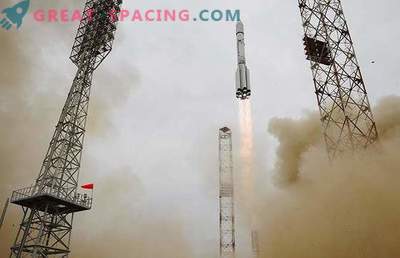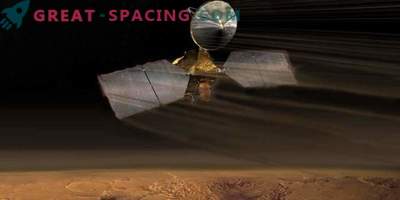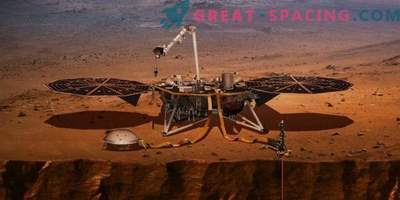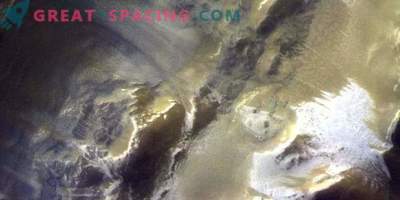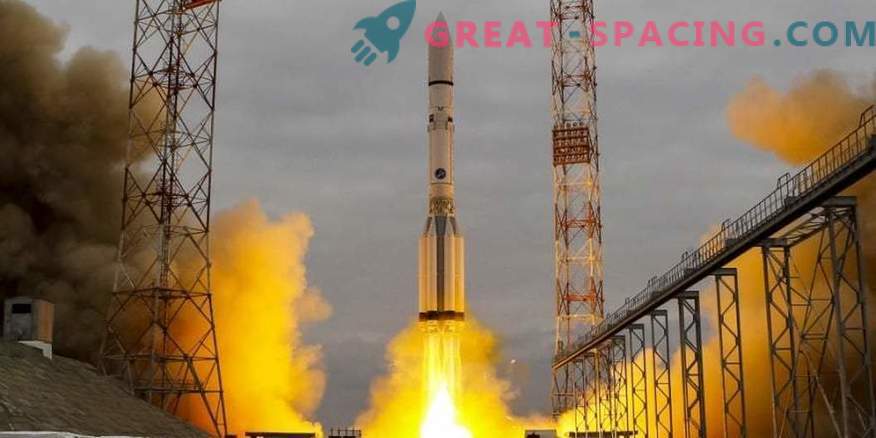
The atmospheric chemistry kit consists of four units: NIR, MIR and TIRVIM spectrometers, as well as an electronic unit
In 2013, ESA and Roscosmos signed a cooperation agreement on the ExoMars project, in which scientists from 29 research organizations are now participating. To date, the first package of observation tools has been delivered to the Martian orbit to search for small chemical components in the atmosphere, indicating primitive life.
Even if the new information turns out to be inconclusive, they will definitely stir up the discussion about the existence of life on the Red Planet in the past. In early 2018, the ExoMars satellite with research instruments will be installed in its operational orbit and will begin to monitor the atmospheric layer.
The mission includes two phases. The first one was launched in March 2016 with the launch of the Proton-M rocket from the Russian complex Baikonur (Kazakhstan). The rocket launched two modules: the Schiaparelli landing gear and the orbital TGO. They arrived to the planet in 226 days, flying 500 million km. Schiaparelli had to test the technology for future landings. He tried to land, but crashed to the surface. TGO tracks traces of gases in the atmosphere, displaying the distribution of water ice over the surface and creating a wide-resolution visualization.
Favorable starting windows to Mars fall out once every two years, so the second stage is scheduled for 2020. The new landing gear will deploy a rover for autonomous navigation on the Martian surface, transmitting data collected via TGO. The main goal of ExoMars is to understand whether life existed on the Red Planet.
The TGO satellite contains 4 scientific instruments: a high-resolution color image system, a neutron detector and two sets of spectrometers. His main scientific task is the study of climate, atmosphere and Martian surface. Built-in detectors are sensitive enough to detect traces of gases. It is expected that the unit will be able to resolve the dispute about the presence of methane in the atmosphere.
Russian ACS consists of three IR spectrometers. Its sensitivity is enough to detect and measure trace amounts of atmospheric gases, such as methane (which may indicate geological or biological activity). The near-IR channel (NIR) is endowed with a universal spectrometer, whose range is 0.7–1.6 µm, and its resolution is 20,000. The device will measure water vapor, aerosols, daytime atmospheric rates of molecular oxygen and atmospheric light fluxes.
The channel of the middle infrared region (MIR) will be engaged in solar shading measurements in the range of 2.2-4.4 microns with a resolution of 50,000.
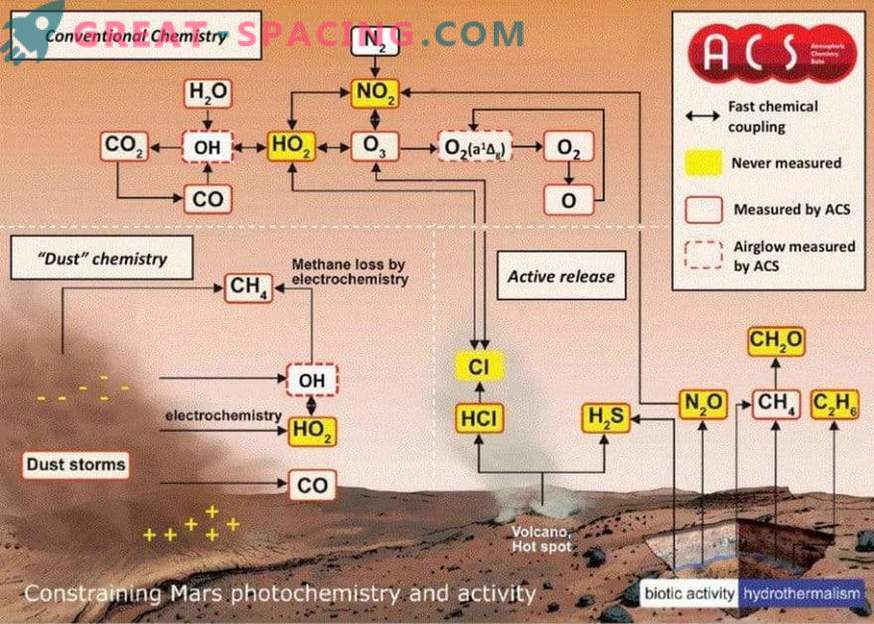
Main photochemical traces expected to be discovered on Mars
Instruments can measure the Martian atmosphere hundreds of times more accurately than ever before. In addition, the probe is tied to an orbit, which will allow much more often to observe the solar luminosity.
There is also a TIRVIM instrument - a spectrometer with a range of 1.7-17 microns and a resolution of 0.2-1.3 per centimeter. He is tasked to collect information about the planetary climate. Scientists expect to receive measurements of surface temperature from a height of 60 km. The tool will help assess the optical depth of the Martian dust and clouds.

